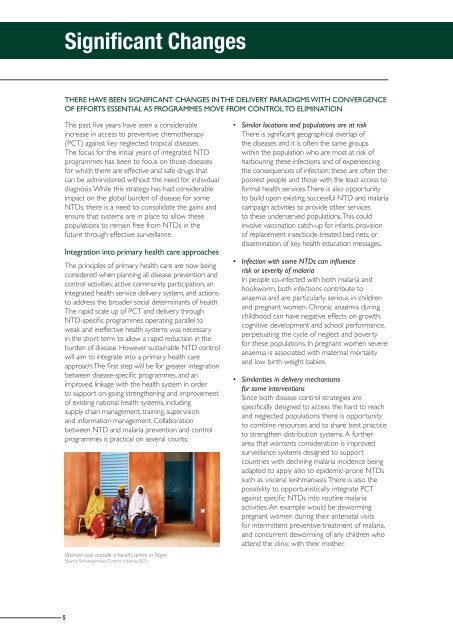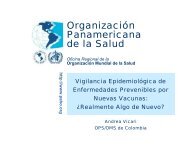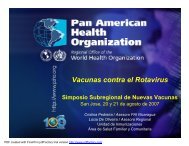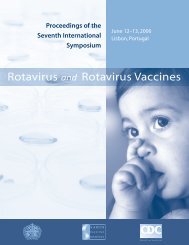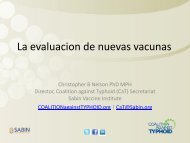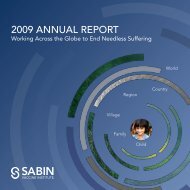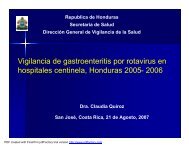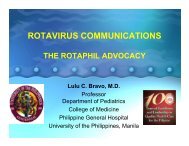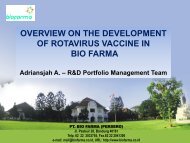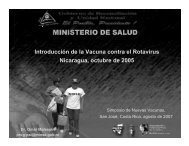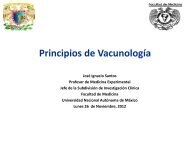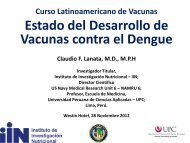APPMG Annual NTD Report 2012 - Schools and Health
APPMG Annual NTD Report 2012 - Schools and Health
APPMG Annual NTD Report 2012 - Schools and Health
Create successful ePaper yourself
Turn your PDF publications into a flip-book with our unique Google optimized e-Paper software.
Significant Changes<br />
THERE HAVE BEEN SIGNIFICANT CHANGES IN THE DELIVERY PARADIGMS WITH CONVERGENCE<br />
OF EFFORTS ESSENTIAL AS PROGRAMMES MOVE FROM CONTROL TO ELIMINATION<br />
The past five years have seen a considerable<br />
increase in access to preventive chemotherapy<br />
(PCT) against key neglected tropical diseases.<br />
The focus for the initial years of integrated <strong>NTD</strong><br />
programmes has been to focus on those diseases<br />
for which there are effective <strong>and</strong> safe drugs that<br />
can be administered without the need for individual<br />
diagnosis. While this strategy has had considerable<br />
impact on the global burden of disease for some<br />
<strong>NTD</strong>s, there is a need to consolidate the gains <strong>and</strong><br />
ensure that systems are in place to allow these<br />
populations to remain free from <strong>NTD</strong>s in the<br />
future through effective surveillance.<br />
Integration into primary health care approaches<br />
The principles of primary health care are now being<br />
considered when planning all disease prevention <strong>and</strong><br />
control activities: active community participation, an<br />
integrated health service delivery system, <strong>and</strong> actions<br />
to address the broader social determinants of health.<br />
The rapid scale up of PCT <strong>and</strong> delivery through<br />
<strong>NTD</strong>-specific programmes operating parallel to<br />
weak <strong>and</strong> ineffective health systems was necessary<br />
in the short term to allow a rapid reduction in the<br />
burden of disease. However sustainable <strong>NTD</strong> control<br />
will aim to integrate into a primary health care<br />
approach. The first step will be for greater integration<br />
between disease-specific programmes, <strong>and</strong> an<br />
improved linkage with the health system in order<br />
to support on-going strengthening <strong>and</strong> improvement<br />
of existing national health systems, including<br />
supply chain management, training, supervision<br />
<strong>and</strong> information management. Collaboration<br />
between <strong>NTD</strong> <strong>and</strong> malaria prevention <strong>and</strong> control<br />
programmes is practical on several counts:<br />
Women wait outside a health centre in Niger.<br />
Source: Schistosomiasis Control Initiative (SCI)<br />
• Similar locations <strong>and</strong> populations are at risk<br />
There is significant geographical overlap of<br />
the diseases <strong>and</strong> it is often the same groups<br />
within the population who are most at risk of<br />
harbouring these infections <strong>and</strong> of experiencing<br />
the consequences of infection; these are often the<br />
poorest people <strong>and</strong> those with the least access to<br />
formal health services. There is also opportunity<br />
to build upon existing, successful <strong>NTD</strong> <strong>and</strong> malaria<br />
campaign activities to provide other services<br />
to these underserved populations. This could<br />
involve vaccination catch-up for infants, provision<br />
of replacement insecticide-treated bed nets, or<br />
dissemination of key health education messages.<br />
• Infection with some <strong>NTD</strong>s can influence<br />
risk or severity of malaria<br />
In people co-infected with both malaria <strong>and</strong><br />
hookworm, both infections contribute to<br />
anaemia <strong>and</strong> are particularly serious in children<br />
<strong>and</strong> pregnant women. Chronic anaemia during<br />
childhood can have negative effects on growth,<br />
cognitive development <strong>and</strong> school performance,<br />
perpetuating the cycle of neglect <strong>and</strong> poverty<br />
for these populations. In pregnant women severe<br />
anaemia is associated with maternal mortality<br />
<strong>and</strong> low birth weight babies.<br />
• Similarities in delivery mechanisms<br />
for some interventions<br />
Since both disease control strategies are<br />
specifically designed to access the hard to reach<br />
<strong>and</strong> neglected populations there is opportunity<br />
to combine resources <strong>and</strong> to share best practice<br />
to strengthen distribution systems. A further<br />
area that warrants consideration is improved<br />
surveillance systems designed to support<br />
countries with declining malaria incidence being<br />
adapted to apply also to epidemic-prone <strong>NTD</strong>s<br />
such as visceral leishmaniasis. There is also the<br />
possibility to opportunistically integrate PCT<br />
against specific <strong>NTD</strong>s into routine malaria<br />
activities. An example would be deworming<br />
pregnant women during their antenatal visits<br />
for intermittent preventive treatment of malaria,<br />
<strong>and</strong> concurrent deworming of any children who<br />
attend the clinic with their mother.<br />
5


